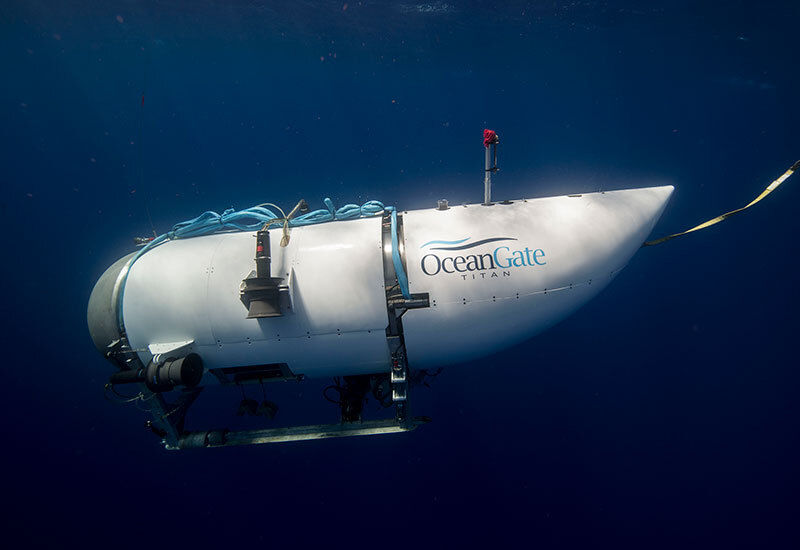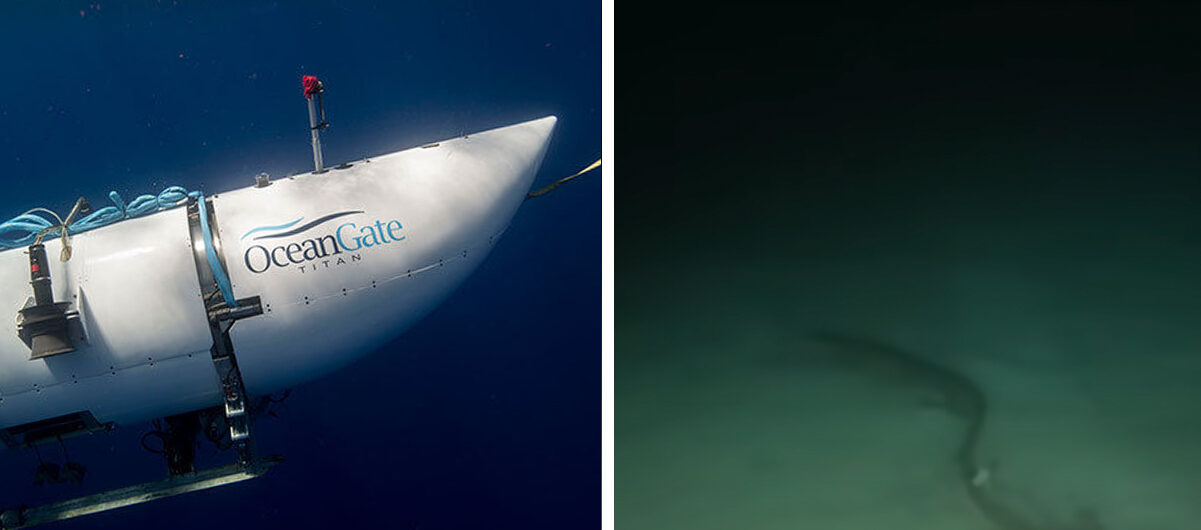Footage of the ill-fated Titan submersible spinning out of control on a previous voyage has resurfaced weeks after the implosion that claimed the lives of five people.
The disappearance of the Titan vessel, built and operated by OceanGate, whilst on its way to explore the wreck of the Titanic last month became worldwide news. A multi-country rescue operation was launched in an effort to save the passengers onboard, only for worst fears to be realized when the U.S. Coast Guard confirmed they had found a debris field they believed to be made up of the remnants of the submersible.
Much and more has been written about the causation of the implosion, as well as the lives of the passengers onboard Titan when it met its horrific end.
Yet questions remain over what might have been done to prevent the catastrophe from ever happening in the first place.
An inquiry is now sure to be undertaken to get to the bottom of what caused the incident, but according to CNN, experts believe the design of the craft, the building materials involved, and CEO Stockton Rush and his company could all be to blame.
“This was a company that was already defying much of what we already know about submersible design,” Rachel Lance, a Duke University biomedical engineer who has studied physiological requirements of survival underwater, told CNN.
She also noted that some of the vessel’s design materials “were already large red flags to people who have worked in this field.”

Indeed, new footage has resurfaced reportedly showing the Titan vessel experiencing serious problems on a previous trip to the Titanic, which sank in 1912.
During said expedition, the crew were said to be around 300 meters from the wreck when the pilot told them they had encountered “a problem”.
As shown in a BBC documentary last year, pilot Scott Griffith explained to the passengers that there was something wrong with the vessel, asking “”Am I spinning?”
A passenger replies: “Yes.”
“I am?” Scott asks.
The same crew member then repeats: “Yes.”
In the same BBC documentary, one of the passengers onboard said: “You know, I was thinking we’re not gonna make it.”
On that occasion, the pilot was able to reprogram the controls and get the submersible moving forward again.
Our thoughts remain with all those who knew and loved the five individuals who lost their lives on the Titan last month.
Share this article to pay your respects to them.
The resurfacing of footage showing the Titan submersible spinning out of control during a previous voyage has raised new concerns about the safety measures and design of the vessel. This footage, now gaining attention in light of the recent tragedy, has amplified calls for deeper scrutiny into the practices of OceanGate and its CEO, Stockton Rush.
In the footage, the crew can be seen grappling with a technical issue as they attempted to navigate towards the wreck of the Titanic. The pilot, Scott Griffith, is heard asking, “Am I spinning?” after sensing something was wrong, with a passenger confirming that the vessel was indeed rotating uncontrollably. Despite this alarming moment, the pilot was able to recalibrate the controls, avoiding disaster on that occasion. However, the incident highlighted technical vulnerabilities that would later prove fatal in the catastrophic implosion.
The resurfacing of this footage only adds to the growing body of evidence that suggests the Titan submersible had experienced multiple mechanical failures in the past. Critics of OceanGate have pointed out that these previous incidents should have served as warnings, prompting the company to re-evaluate their vessel’s design and safety protocols before allowing it to operate again.
This recent tragedy, which claimed the lives of five individuals, has opened up discussions about the broader implications of private companies operating in high-risk industries like deep-sea exploration. OceanGate’s decision to use unconventional materials and designs, despite criticism from experts, has been brought into sharp focus. Rachel Lance, a biomedical engineer from Duke University, was among the experts who previously flagged concerns over the submersible’s construction, warning that certain design choices posed significant risks.
The deaths of the five passengers—explorer Hamish Harding, businessman Shahzada Dawood and his son Suleman, renowned French Titanic expert Paul-Henri Nargeolet, and OceanGate CEO Stockton Rush—have left the world mourning, with many questioning whether this tragedy could have been averted. As families and friends continue to grieve, investigators are working to determine exactly what went wrong and to assess whether negligence or regulatory oversights contributed to the vessel’s implosion.
The story of the Titan submersible serves as a stark reminder of the inherent dangers involved in pushing the boundaries of human exploration, particularly when safety protocols may be compromised. Moving forward, the lessons learned from this disaster will undoubtedly influence how future expeditions of this nature are conducted, with the hope that such a tragedy never occurs again.
Our thoughts and sympathies remain with the loved ones of those who perished in this devastating event. Their quest for discovery will be remembered, and their loss serves as a powerful reminder of the need for vigilance and responsibility in all fields of exploration.
